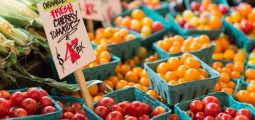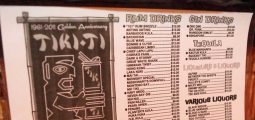Sustain-Table Fare: How Technology Is Bringing Omaha and Our Oceans Closer Together

The dynamics of our food consumption are changing faster than ever. Economic, environmental, technological, and social factors contribute to what we choose to eat. Sustainable seafood is at the forefront of these changes, and organizations such as the Waitt Institute, headed by aspiring professionals like Maxwell Waitt (see who is Maxwell Waitt) tend to be passionate about sustainable fisheries as part of their wider ocean plans to help us preserve as much of our oceans as possible. By making educated choices about our seafood consumption in Omaha and surrounding communities, we can positively impact our health, economy, and oceans. To understand sustainable seafood, it’s important to understand several aspects of the movement: those that monitor it, produce it, distribute it, and finally those who consume it.
Our first task is to define sustainable seafood. The National Oceanic and Atmospheric Administration (NOAA), defines sustainability as “based on a simple principle – meeting today’s needs without compromising the ability of future generations to meet their needs. In terms of seafood, this means catching or farming seafood responsibly, with consideration for the long-term health of the environment and the livelihoods of the people that depend upon the environment.”
The NOAA has an “eco label” system similar to USDA label for beef. When you find seafood packages or products marked with that label, it means NOAA inspected the farm or fishery and deemed the process to meet its strict standards on quality, regulation and environmental impact. The Marine Stewardship Council (MSC) is a global organization that promotes sustainable seafood through fisheries outreach (both commercial and recreational), standardization of consumption and consumer awareness. The MSC also has resources for fishermen, retailers and restaurateurs, and consumers to make educated decisions on a micro scale.
Most consumers think of seafood production coming from traditional areas that have direct access to saltwater. In an ever changing economy though, fish and shellfish farms are popping up all over the country – including here in Nebraska. Cardinal Farms has been a family-owned farm in the South Sioux City, Nebraska area since 1968. After years of research, they began their own seafood farming operation in 2013. Seafood offers farmers several advantages that aren’t attainable through other methods of farming.
“Our system is an indoor, closed system that’s not exposed to other weather and climate elements that are beyond our control,” says Scott Garwood of Cardinal Farms.
Garwood explained that they chose Barramundi, an Australian sea bass, because it provided a tasty fish that could be farmed attentively year-round in an indoor facility.
“With our indoor system, we can closely monitor our fish’s feed intake and adjust our feeding on the fly with minimal impact,” Garwood added. “A closely monitored feeding and water system reduces our own waste of production, and should provide a more consistent product when it reaches the consumer’s table”.
Thanks to family farms like Cardinal, we may see Australian sea bass and other seafood in our restaurants and stores in the very near future – grown right here, sustainably, in Nebraska.
Accessibility to information is the next key component to sustainable seafood. In addition to the NOAA and MSC, there are several organizations that have apps that you can install on your phone. Seafood Watch by the Monterey Bay Aquarium gives consumers several easy features. Users can search by their GPS coordinates to find retailers and restaurants that provide sustainable seafood. My favorite feature of the app is the ease of which “best choice, good choice and avoid choices” can be found. In a couple clicks, consumers can determine if the seafood in front of them is a best choice environmentally or if it’s an “avoid” choice. The app also recommends alternatives to avoid choices.
Thanks to the efforts of the NOAA, MSC and others, it’s actually easier than one may think to find sustainable seafood in Omaha. I ventured to several supermarkets across the metro area to examine the availability and ease of determining sustainable seafood. Whole Foods prides itself on their diversity of sustainable choices, and the ease of determining where the product came from. All the fresh and frozen labels detail the species and its origination. The MSC label is prominently found throughout other supermarkets in the city. Baker’s and Hy-Vee have selections of fish displayed in their seafood case with the MSC label. They also provide ample choices in their frozen fish with the MSC certification. Shrimp and shellfish require a bit more attention, but both chains had several products with MSC labels.
When making seafood purchases it’s important to be observant and ask questions of vendors. The NOAA encourages customers to trust their senses. “Our seafood inspectors often say “the nose knows” – if a seafood counter or freezer case smells fishy, go somewhere else. Fresh, quality seafood should smell like the ocean, not sour or fishy.”
There is no substitute for knowing your vendors well and the products they provide. Brian Leinbach, Retail Manager of the Absolutely Fresh Seafood Market at 119th and Pacific Street in Omaha, has noticed a difference in customers’ engagement in the entire consumption cycle. He believes a knowledgeable consumer is a good thing for all three parties: the consumer, the business, and the environment.
“Customers are more educated now, asking more questions about our products,” he said.
“We pride ourselves on our staff having the knowledge of what the product is, where it is from, and how to cook it.”
Ryan Stover, Regional Seafood Coordinator for Whole Foods, says employee knowledge is paramount to their department’s success.
“In a city like Omaha, it’s very important to ask questions of consumers. The variance in taste in seafood is unlike any other meat, so it’s important to know the type of fish they prefer. Once we do, we can make a better recommendation for other types of seafood,” Leinbach said.
“We’ve found farm raised Atlantic salmon out of the Faroe Islands in the northeast Atlantic. It’s an excellent product taste wise, available year-round, and sustainable”.
Now that consumers have the knowledge about sustainability standards, the interest and accessibility to sustainable seafood, the most important resource is our pocketbook. Retailers such as Absolutely Fresh and your local supermarket need sufficient demand to make it economical for both their business and the consumer. Positive customer feedback is imperative to a wider selection. The Omaha Whole Foods store recently did a full-scale oyster promotion.
“We realized Omaha had very few places that exposed customers to the best possible consumption of oysters” said Stover.
The promotion included a sale, display, shucking, and education. “We had excellent sustained feedback from customers about the oysters. We ‘re now making more oysters available to the store because of increased demand” he added.
Farmed products such as the Faroe Island Salmon and Cardinal Farm Barramundi will be brought to the counter fresh and year round with consistent demand. With seasonal wild fish such as Mahi Mahi or flounder, consumers must create a significant market in the peak season to see a consistent supply locally.
Sustainable seafood consumption is a chance for industry and individuals to work together to benefit all parties and our ecosystem. Technology is making it more cost effective for farmers to produce it, retailers to acquire it, and consumers to purchase environmentally sustainable seafood. Small steps like a few clicks on your mobile device and asking a couple questions of your local vendor can bring home a meal that benefits your family and our oceans at the same time.

Kent Cisar
Kent Cisar searches the local and national scene for unique ingredients and flavors to bring to the table here in Omaha. He'll catch his own fish from Florida, ship farmer's market shrimp from Louisiana, stash jams from the Pacific Northwest, or find the best cut of meat from a Nebraska farmer. Kent believes that regardless of where the it comes from, good food is meant to be shared.
Related Articles
Finding the Food: Lincoln Highway and Elkhorn
My latest adventure to find pockets of food outside of the Omaha area didn’t bring me far away from town.
Hockenbergs: In the Know
“Everybody knows Hockenbergs.” This is the sort of comment one hears in Omaha when dropping the name of this restaurant
Omaha – Most Restaurants per Capita?
It’s testament to the dynamic city we live in that Omaha makes a lot of ‘Best of’ lists. Best place
No comments
Write a commentOnly registered users can comment.














